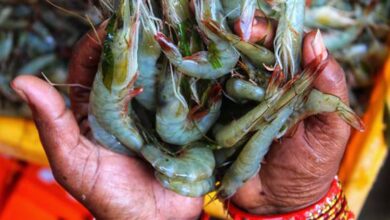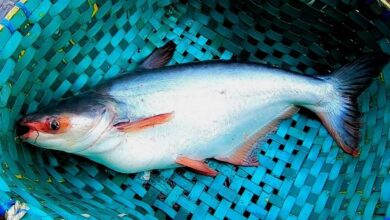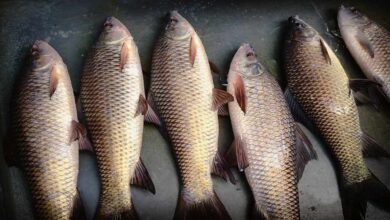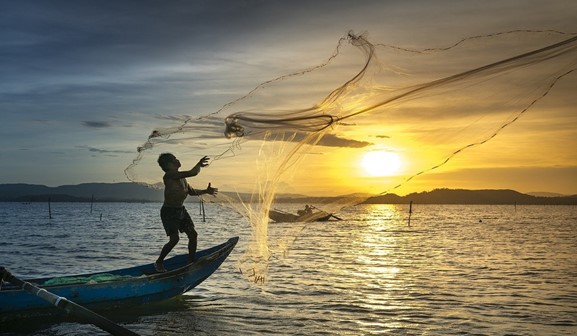
India consists of an enormous territory surrounded by the Bay of Bengal, the Indian Ocean, and the Arabian Sea. The country is blessed with 7,517 kilometers of coastline including more than 1,280 islands and islets and many rivers.
India is the second-largest aquaculture and fish producer in the world. About 6.3% of the world’s fish supply is produced here. The estimated overall fish production in 2018 was 6.24 million metric tons (MMT). More than ten percent of the diversity of fish in the world is found in India. And, freshwater fish contribute around 12.8% of the total animal protein produced in the country.
The fisheries industry supports close to 14.5 million fishermen and is expanding at a rate of 7% per year. In FY2018-19, India’s fish production increased by nearly 6%, from 12.59 million tons to 13.34 million tons. However, in FY2021-22, the fishing industry recorded a double-digit annual growth rate of 10.34% and hit a record fish consumption of 162.48 lakh tons. Due to its rapid expansion, the sector is known as the sunrise sector. The majority of the expansion in the fish farming industry is attributable to freshwater aquaculture, while marine finfish culture is rarely conducted.
The country’s fish production sector is sustainable due to its available resources and it generates nutritional security and large number of employments. Aquaculture industry is also the primary source of income for a significant portion of the financially unprivileged people, particularly in the coastal regions of India.
The fisheries industry provides a living for more than 28 million individuals in India, particularly those from economically deprived communities. During 2019-20, the fisheries industry earned 46,662,85 crore rupees from exported fish and supported millions of fishermen.
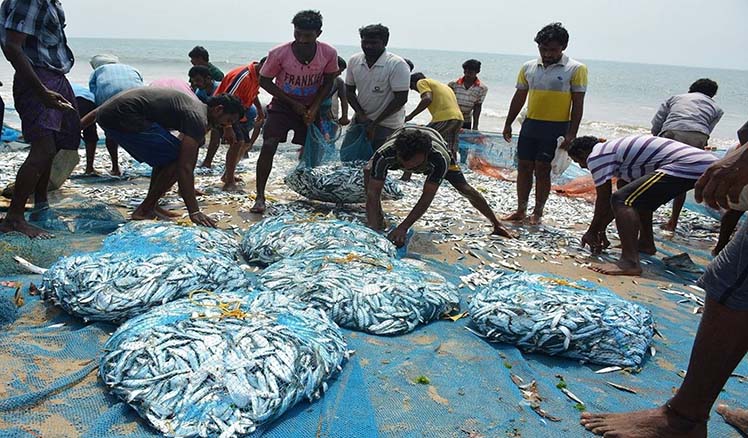
Three major fish species catla (Catla catla), rohu labeo (Labeo rohita), and mrigal carp (Cirrhinus mrigal) constitute over ninety percent of the overall aquaculture production in India.
A second major group which is comprised of three exotic carps, notably silver carp (Hypophthalmichthys molitrix), grass carp (Ctenopharyngodon idellus), and common carp (Cyprinus carpio), were introduced to the country’s carp polyculture system in the 1970s.
The other significant finfish species are rising perches (Anabas testudineus), mussels (Channa striata and C. marulius), etc. However, carps, pacu, and pangasius are the basis of the country’s fishing industry, and expanding this foundation would improve fish yield. When more advanced species and systems would be used, there is enormous potential for their evolution.
Another attractive fish culture technique has been revealed in Lakshadweep in India which is known as ornamental fish culture. This culture technique focuses on the breeding, raising, and production of attractive and vibrant fish species used for aesthetic purposes. It assists to boost the country’s economy in the fish production sector as well as tourism and decoration.
To address the significance of the fisheries industry, the Department of Fisheries was established in February 2019 to offer continuous and concentrated attention to the sector’s growth. In June 2019, the Ministry of Fisheries, Animal Husbandry, and Dairying were subsequently established to enhance the fish production sector.
The Indian Government is committed to boosting fish consumption to 22 million metric tons by 2024-2025. This would have a favorable impact on 2.80 crore fishermen and fish cultivators and almost double that amount in fish-related value chains.
The government, led by Prime Minister Narendra Modi, has announced the Pradhan Mantri Matsya Sampada Yojana (PMMSY), a new flagship initiative with a considerable expenditure of Rs. 20,050 crores (US$ 2.46 billion) for the development and growth of the country’s fisheries sector.
The PMMSY describes ambitious goals for FY 2025, such as-
- Expanding fish production by 70 lakh MT,
- Raising aquaculture productivity from the country’s current average of 3 tonnes per Ha to 5 tonnes per Ha.
These initiatives significantly increased exports from Rs. 46,589 crores (US$ 5.72 billion) to Rs. 100,000 crores (US$ 12.28 billion). Moreover, it creates more than 55 lakh job opportunities and doubles fishers’ and fish farmers’ incomes to consolidate the fisheries sector’s gains and boost economic growth.
By following this success, the Indian government is at the forefront of modernizing the fishing sector and bringing in an economic revolution through the “Blue Revolution.”
In addition, the establishment of modern fishing harbors and fish landing centers has been planned and commencing with five main fishing harbors that will be developed as economic hubs.
The country addresses several technical and economic challenges to develop its fish production sector.
Overproduction of a few species leads to economic loss and variability. Diversification of species driving up the demand for formulated aquafeed. Lesser use of modern culture systems provides a low yield. These are the major technical constraints of fish production in India.
Depending on the initiative, objectives, and resources of the states, the development of Indian fisheries occurred at diverse rates and in various states. Therefore, integrated approaches are required by the government to harmonize the sector. A significant portion of aquaculture in India is still dependent on traditional production techniques. So, modernizing their practices will enhance fish productivity and contribute to environmental sustainability.
To promote India’s blue economy and to develop a sustainable and prosperous future for the industry, it can only continue to grow, producing more money and jobs for everyone affiliated with this sector.
Sanjida Akter Nisha
Department of Oceanography, NSTU


